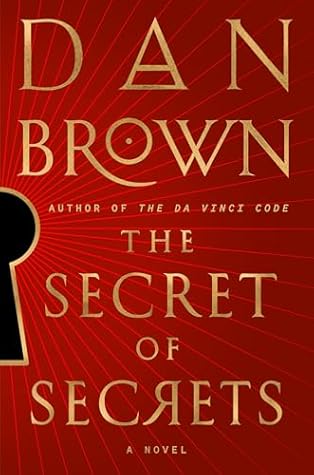More on this book
Community
Kindle Notes & Highlights
by
Dan Brown
Read between
September 28 - October 26, 2025
The afterlife is a shared delusion…created to make our actual life bearable.
Einstein had famously declared: Coincidence is God’s way of staying anonymous.
Precognition. The ability to sense or foresee future events before they happen.
Then Katherine went on to describe the strangest case of all—Morgan Robertson—an American author who published the 1898 novel Futility, which he based on a vivid nightmare he had about an unsinkable ocean liner—The Titan—striking an iceberg and sinking on one of its first voyages across the Atlantic Ocean. Incredibly, the book was published fourteen years before the Titanic disaster. It so specifically described the ship’s construction, navigational course, and sinking that the coincidences had never been explained.
Buddha: With our thoughts, we create the world. Jesus: Whatever you ask for in prayer, it will be yours. Hinduism: You have the power of God. The concept, Langdon knew, was echoed by modern progressive thinkers and artistic geniuses as well. Business guru Robin Sharma declared: Everything is created twice; first in the mind, and then in reality. Pablo Picasso’s most enduring quote proclaimed: Everything you can imagine is real.
Social media, Dana thought. The biggest intelligence boon since the Catholic Church invented confession.
Remarkably, some of humankind’s most creative minds had been epileptic—Vincent van Gogh, Agatha Christie, Socrates, and Fyodor Dostoyevsky. The Russian novelist had once proclaimed his epileptic seizures to be “a happiness and harmony unthinkable in the normal state.”
According to Sherlock Holmes: When you have eliminated the impossible, whatever remains, however improbable, must be the truth.
sometimes a change in perspective is all it takes to reveal the Truth.”
Timor mortis est pater religionis, Langdon mused, recalling the ancient saying made famous by Upton Sinclair. Fear of death is the father of religion.
To be famous meant you would be remembered long after you died…fame a kind of eternal life.
“Memento mori,” Langdon said. “Remember death is coming…and live well.”
The concept of “filtered reality,” he knew, was a recurring theme in ancient scripture. The Hindu Vedanta, which had inspired the great quantum physicists like Niels Bohr and Erwin Schrödinger, described the physical mind as a “limiting factor” that could perceive only a fraction of the universal consciousness known as Brahman. The Sufis defined “mind” as a veil that disguised the light of divine consciousness. The Kabbalists described the mind’s klipot as obscuring most of God’s light. And the Buddhists warned that the ego was a limiting lens that made us feel separate from the
...more
My brain is only a receiver. In the Universe there is a core from which we obtain knowledge.
Confusion creates chaos…and chaos creates opportunity.
She nodded. “It’s called neural plasticity. Our brains physically evolve to meet the needs of new environments. The brain creates new neural pathways to process new experiences. Taking drugs like these, in conjunction with VR simulation, would create a staggeringly intense experience—exponentially more vivid than what occurs in normal life—the type of experiences, which, if repeated, would literally begin to rewire a brain’s neural network with alarming speed.”
The facility depicted was a highly classified Russian location in Siberia; the satellite photo was taken after the drawing was created; and the artist was a young man named Ingo Swann who had never left the U.S. His information had come from “remote viewing” the site—that was, closing his eyes and relocating his consciousness to Siberia…his point of view hovering over the site and memorizing its features.
Including some “eight-martini results,” Judd recalled—the project’s official lingo for a success so mind-boggling that everyone required multiple cocktails to recover. Those results included spying on a Soviet double-hulled Typhoon submarine in the Arctic; finding a crashed Soviet Tu-95 bomber in Africa; locating kidnapped Brigadier General James L. Dozier in Italy; identifying a KGB colonel spying in South Africa; and more than a dozen other seemingly impossible results.
Neurons that fire together…wire together. The process was known as Hebbian learning, and it had been part of the neuroscience field since the 1930s when Donald Hebb discovered that the brain, when challenged repeatedly with intense tasks, would grow new neural pathways very quickly, in much the same way a weight lifter grew muscles by exercising.
“The Starbucks mermaid,” Langdon had railed, “has two tails! That means she’s not a mermaid at all, but rather a siren—an evil seductress who lures sailors to follow her blindly toward shipwreck and ultimately toward death! I can’t trust a corporation that neglected to conduct any iconographic research before adorning Frappuccinos with a deadly sea monster…”


